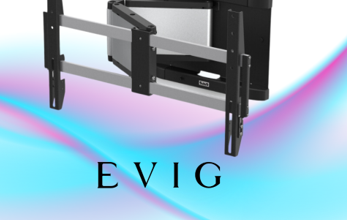Advancing cargo inspection: from manual checks to ai mastery

Imagine a world where every single cargo item entering a country had to be manually inspected. Tedious, right? Fortunately, we’ve come a long way from those days. This article takes you through the fascinating journey of cargo inspection systems, from the early manual checks to the advent of AI and machine learning. Along the way, we’ll explore how X-ray and gamma-ray scanners revolutionized the industry and what the future holds for this ever-evolving technology.
The leap from manual checks to automated systems
Back in the day, inspecting cargo was no small feat. Customs officers would painstakingly sift through containers and pallets, looking for contraband or illegal items. It was a time-consuming and often inaccurate process. Not to mention, it was physically demanding. Imagine lifting heavy boxes all day, every day. That was the reality for many workers in the field.
Then came the introduction of automation. Suddenly, there were machines that could scan entire containers in a fraction of the time it took a human. Early automated systems weren’t perfect, but they were a massive improvement. They brought consistency and speed to the process, significantly reducing human error. It was like moving from a horse-drawn carriage to a car—both got you from point A to point B, but one did it much more efficiently.
How x-ray and gamma-ray scanners changed the game
Next came the real game-changers: X-ray and gamma-ray scanners. These technologies allowed for non-intrusive inspection, meaning cargo inspection system could be scanned without being opened. Think of it like having X-ray vision—suddenly, customs officers could see inside containers without breaking the seal. This was revolutionary.
X-ray scanners use high-energy rays to create images of the contents inside cargo containers. These images can reveal everything from hidden compartments to illicit substances. Gamma-ray scanners operate on similar principles but use different types of radiation. Both technologies have become staples in cargo inspection, providing a level of detail that was previously unimaginable.
The introduction of these scanners dramatically sped up the inspection process. What used to take hours could now be done in minutes. And with better accuracy too! It was a win-win situation for both security agencies and businesses.
The rise of ai and machine learning in cargo screening
As if X-ray and gamma-ray scanners weren’t impressive enough, along came artificial intelligence (AI) and machine learning (ML). These technologies have taken cargo inspection to new heights. Imagine a system that not only scans but also analyzes and identifies potential threats automatically. Sounds like something out of a sci-fi movie, right? Well, it’s very much a reality today.
AI algorithms are trained on vast datasets to recognize patterns and anomalies that might indicate illegal activities. Machine learning models continuously improve as they process more data, becoming more accurate over time. This means fewer false positives and faster clearances for legitimate cargo.
These advanced systems can even predict potential risks based on historical data. It’s like having an experienced customs officer with years of expertise built into a machine. The efficiency gains are enormous, freeing up human inspectors to focus on cases that truly require their attention.
Read also:Exploring the Potential of AI Face Swap Technology in Gaming
Real-world benefits for businesses and security
The benefits of these technological advancements extend far beyond just speed and accuracy. For businesses, faster inspections mean quicker turnaround times and less downtime at ports and borders. This translates to cost savings and improved supply chain efficiency.
For security agencies, the ability to detect threats more accurately means safer borders and reduced smuggling activities. It’s not just about catching illegal items; it’s about creating a deterrent effect. When smugglers know that advanced technology is in play, they’re less likely to attempt illegal activities.
Moreover, these systems can handle large volumes of cargo without getting tired or making mistakes—something human inspectors simply can’t match. It’s like having an army of tireless workers who never take breaks or need vacations.
What’s next in cargo inspection tech?
So, what’s on the horizon for cargo inspection technology? The future is looking incredibly promising. We’re seeing advancements in AI algorithms that can analyze data even more quickly and accurately. There are also developments in portable scanning devices that can be deployed anywhere, offering flexibility that stationary systems can’t provide. For instance, the NUCTECH™ TH1800 provides advanced scanning capabilities with high precision.
Another exciting area is the integration of blockchain technology for tracking and verifying shipments. This could add an extra layer of security by ensuring that cargo has not been tampered with during transit. Imagine a world where every step of a shipment’s journey is recorded and immutable—talk about peace of mind!
In summary, we’ve come a long way from the days of manual checks. The journey from basic automation to advanced AI has revolutionized cargo inspection, making it faster, more accurate, and more secure than ever before. And with ongoing technological advancements, who knows what incredible innovations await us next?







